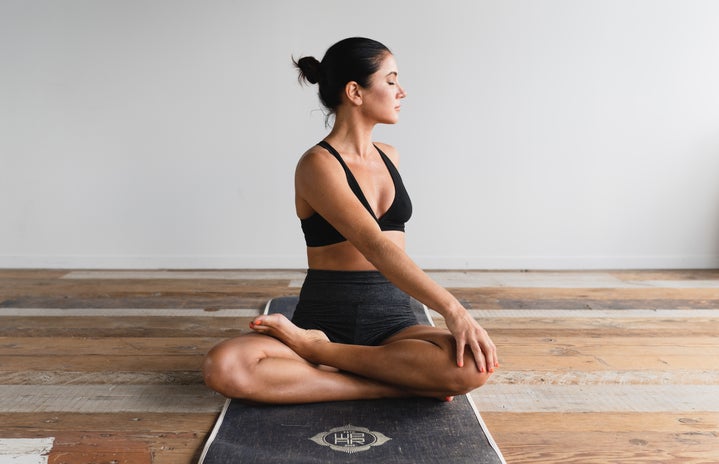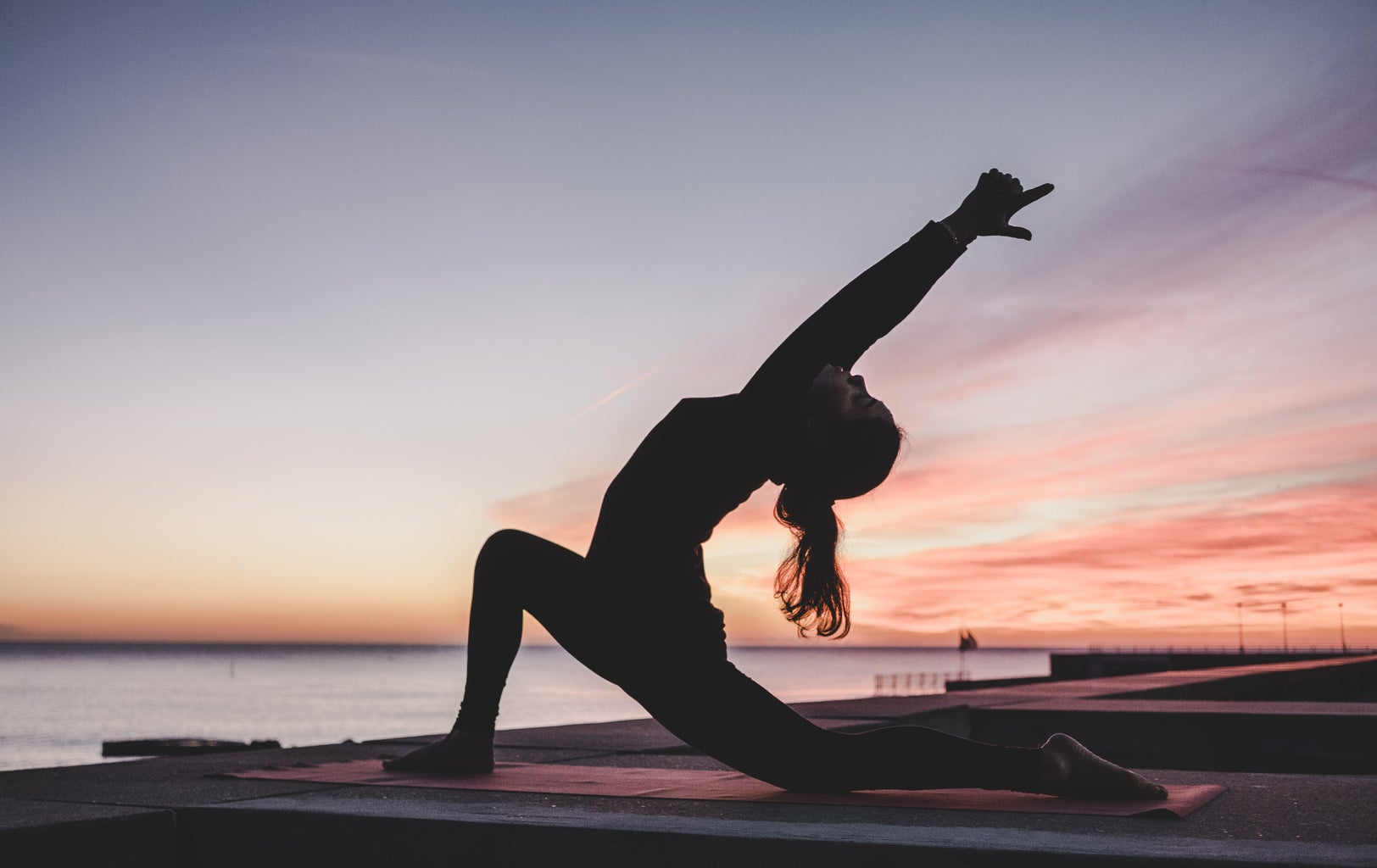Here are some basic yoga poses that you can try in between studying!
- Mountain Poses- is the base for all standing poses; it gives you a sense of how to ground into your feet and feel the earth below you. Mountain pose may seem like “simply standing,” but there is a ton going on.
How to do it: Start standing with your feet together. Press down through all ten toes as you spread them open. Engage your quadriceps to lift your kneecaps and lift up through the inner thighs. Draw your abdominals in and up as you lift your chest and press the tops of the shoulders down.
- Downward Dog- is used in most yoga practices and yoga classes and it stretches and strengthens the entire body. I always say, “a down dog a day keeps the doctor away.”
How to do it: Come on to all fours with your wrists under your shoulders and knees under your hips. Tuck under your toes and lift your hips up off the floor as you draw them up at the back towards your heels. Keep your knees slightly bent if your hamstrings are tight, otherwise try and straighten out your legs while keeping your hips back. Walk your hands forward to give yourself more length if you need to. Press firmly through your palms and rotate the inner elbows towards each other. Hollow out the abdominals and keep engaging your legs to keep the torso moving back towards the thighs. Hold for 5-8 breaths before dropping back to hands and knees to rest.
- Plank- teaches us how to balance on our hands while using the entire body to support us. It is a great way to strengthen the abdominals and learn to use the breath to help us stay in a challenging pose.
How to do it: From all fours, tuck under your toes and lift your legs up off the mat. Slide your heels back enough until you feel you are one straight line of energy from your head to your feet. Engage the lower abdominals, draw the shoulders down and away from the ears, pull your ribs together and breathe deeply for 8-10 breaths.
- Forward Bend- It’s important to incorporate this posture in yoga practice to stretch the hamstrings, lower and upper back, and sides. Seated forward bend is the perfect fold for everyone to start to open up the body and learn to breathe through uncomfortable positions. If you feel any sharp pain, you need to back off; but if you feel the tension when you fold forward and you can continue to breathe, you will slowly start to loosen up and let go. You can also keep your knees bent in the pose as long as the feet stay flexed and together.
How to do it: Start seated with your legs together, feet firmly flexed and not turning in or out, and your hands by your hips. Lift your chest and start to hinge forward from your waist. Engage your lower abdominals and imagine your belly button moving towards the top of your thighs.
- Bridge- A counter pose to a forward bend is a back bend. Bridge is a good beginner’s back bend that stretches the front body and strengthens the back body.
How to do it: Lie down on your back and place your feet hip-width apart. Press firmly onto your feet and lift your butt up off the mat. Interlace your hands together and press the fists down to the floor as you open up your chest even more. Imagine dragging your heels on the mat towards your shoulders to engage your hamstrings. Hold for 8-10 breaths then lower your hips down and repeat two more times.
- Child’s Pose- Everyone needs a good resting pose and this pose is an awesome one not just for beginners but for yoga practitioners of all levels. It’s good to learn a child’s pose to use when you’re fatigued in Down Dog, before bed at night to work out the kinks, or anytime you need a mental break and stress/tension relief.
How to do it: Start on all fours then bring your knees and feet together as you sit your butt back to your heels and stretch your arms forward. Lower your forehead to the floor (or block or pillow or blanket) and let your entire body release. Hold for as long as you wish!
- Easy Pose- This pose strengthens back and abdominal muscles while stretching the hips and groin.
How to do it: Sit on the floor, with your legs out in front of you. Cross your shins and slip each foot under the opposite knee. Rest your hands on your knees.
- Tree Pose- is an awesome standing balance for beginners to work on to gain focus and clarity, and learn to breathe while standing and keeping the body balanced on one foot.
How to do it: Start with your feet together and place your right foot on your inner left upper thigh. Press your hands in prayer and find a spot in front of you that you can hold in a steady gaze. Hold and breathe for 8-10 breaths then switch sides. Make sure you don’t lean into the standing leg and keep your abdominals engaged and shoulders relaxed.
- Reclining Twist- This relaxing twist also stretches the spine and shoulders and strengthens the lower back.
How to do it: Lie on the floor with your arms in a T-shape. Bring your knees to your chest. Keeping your arms out, let knees fall to one side. Look over your opposite shoulder.
- Legs on Wall- This calming pose stretches hamstrings and calves and promotes blood flow to the brain.
How to do it: Lie on the floor with your hips as close to the wall as possible. Stretch your legs up the wall. Rest your arms at your sides.



